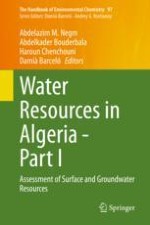This book reviews the latest information on the assessment of surface and groundwater resources in Algeria. The authors cover a large diversity of topics, including the status and assessment of water resources, impacts of pesticides, soil droughts, analysis of flood characteristics, hydrogeological investigations and modeling applications, and evapotranspiration. Special attention is given to the impacts of climate changes on water resources. The assessment methods present in this book can be used or adapted to study other regions of North Africa, Middle East and/or in the Mediterranean with similar climate conditions as Algeria.
This book and the companion volume Water Resources in Algeria - Part II: Water Quality, Treatment, Protection and Development will appeal to engineers, researchers, graduate students and policymakers interested in the field of groundwater and surface water assessment.
